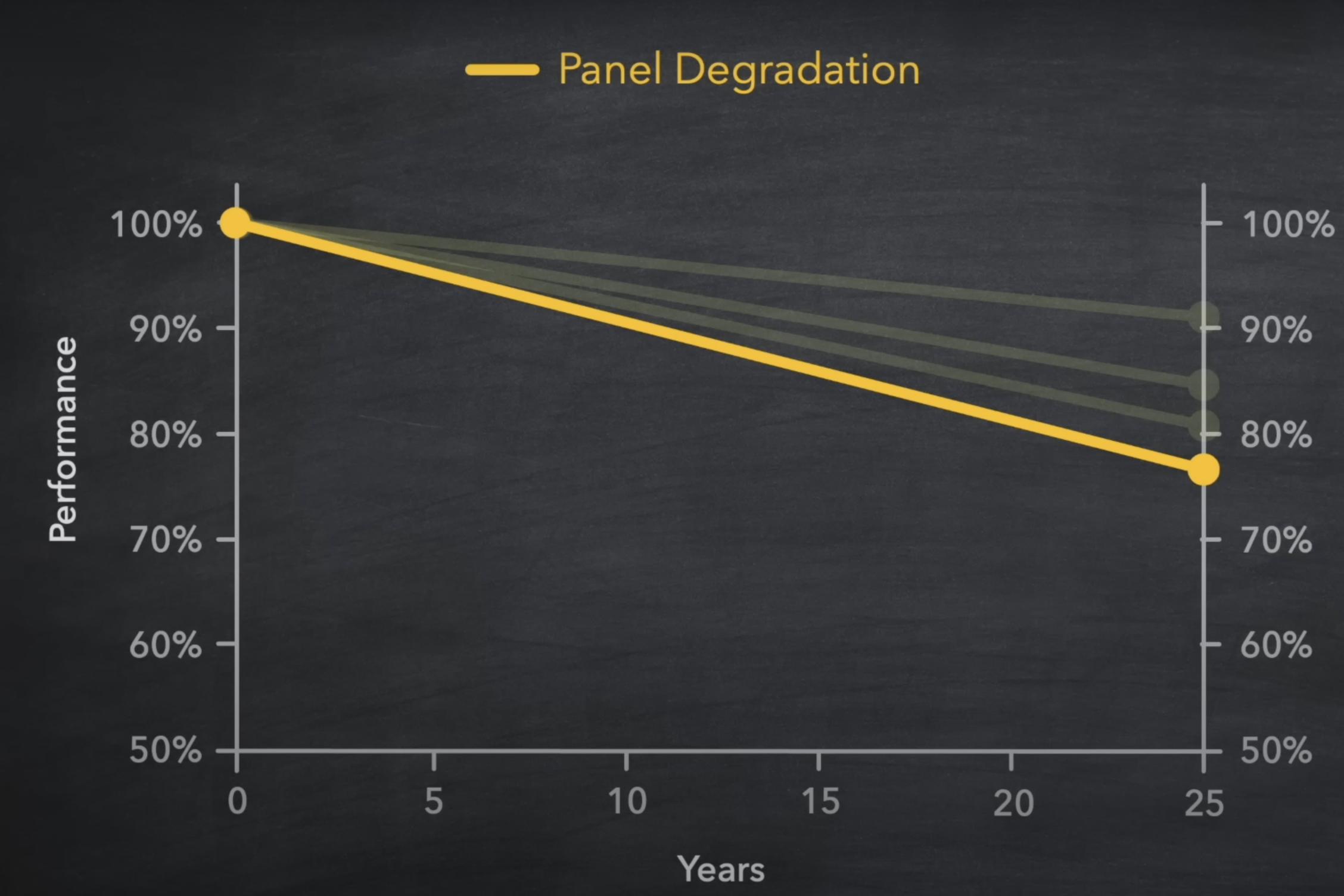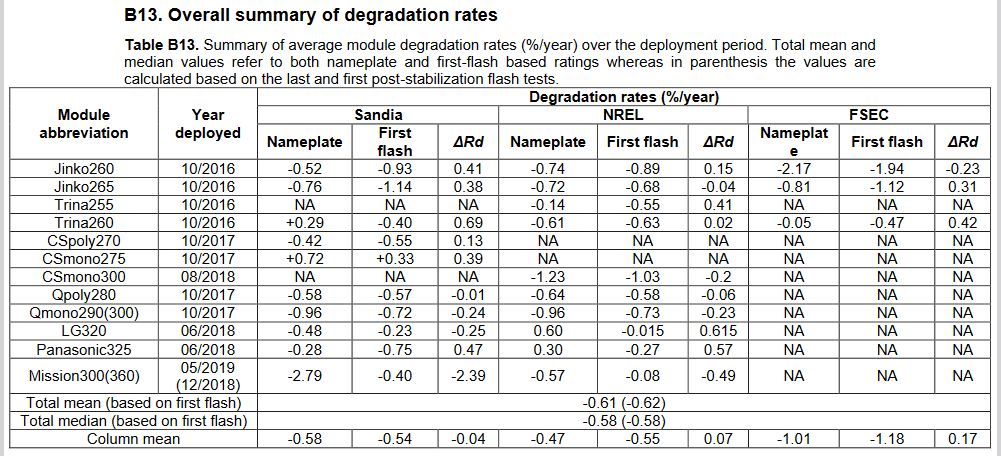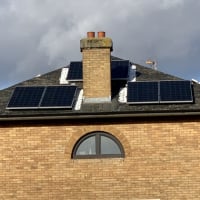We’d like to remind Forumites to please avoid political debate on the Forum.
This is to keep it a safe and useful space for MoneySaving discussions. Threads that are – or become – political in nature may be removed in line with the Forum’s rules. Thank you for your understanding.
📨 Have you signed up to the Forum's new Email Digest yet? Get a selection of trending threads sent straight to your inbox daily, weekly or monthly!
Any comments on solar pv quote?
Comments
-
Hi. Just to confirm, shading is minimal on the aspect of the roof where the panels would go.1
-
Yep, had one fail a few years back, but co-incided with the upgrade of the other roof (to Solaredge), so the guys on site were able to swap it for me.Exiled_Tyke said:I can't see any of these other benefits outweighing the additional costs of going with SolarEdge and as someone who's suffered an optimiser failure I would only recommend SE if needed for shading or multi-orientation set ups. I am one of those who's suffered the worst of both worlds (per the video). In my case the support from SE was appalling as they refused to accept it was the optimiser that had failed and insisted I replaced the offending panel. it therefore cost me months of lost production on top of everything else. I think Martyn may have had an optimiser go as well but I could well be wrong.
And one panel was down for some time in June/July. I asked SE to check it, and they concluded it was the PO and sent me a new one. I was planning to swap it myself, as access was tricky, but possible, but then noticed the panel is generating again ...... no idea what happened.
I'm a big, big fan of Solaredge, especially having shaded E and W roofs, but I'm not sure they are worth it so much these days, due to two factors,
first, panel efficiency has improved loads, so it's possible to install a lot more kWp than before. That also means you don't (economically) need to squeeze out every last Wh of generation. That might seem wasteful, but if the inverter is capped, or undersized (sensibly), then it's not so bad.
secondly, from what I've read on here, and I appreciate it's anecdotal, it seems that the bypass diodes on modern panels are preventing a shaded panel from dragging down all the others (as much).
But, the monitoring available from a SE system is excellent, so there are two sides to the issue. My personal recommendation, and it's a weak and wobbly opinion I admit, would not be to go with SE, if it costs more, for a roof with only minor shading issues.
However, if you had a shallow pitch, hipped roof, detached bungalow, and want to cover say 3 of the 4 roofs, possibly with different size/power PV panels, then I wouldn't be able to recommend SE enough.Mart. Cardiff. 8.72 kWp PV systems (2.12 SSW 4.6 ESE & 2.0 WNW). 28kWh battery storage. Two A2A units for cleaner heating. Two BEV's for cleaner driving.
For general PV advice please see the PV FAQ thread on the Green & Ethical Board.2 -
All valid points. And while optimizers do fail, inverters failure rates are between 2-4X higher, depending on brand. Just to put things in perspective.
For me, the most potent benefit of an optimizer is often overlooked. No, it's not the increased fire protection or the monitoring of each panel's performance. It's the longevity of the system's performance i.e. total system generation no longer being linked to the weakest, worst performing aging panel.
This is particularly relevant in the era of Chinese products. To quote a recent NREL study "Panel quality can make some impact on degradation rates. NREL reports premium manufacturers like Panasonic and LG have rates of about 0.3% per year, while some brands degrade at rates as high as 0.80%. After 25 years, these premium panels could still produce 93% of their original output, and the higher-degradation example could produce 82.5%".
- 10 x 400w LG Bifacial + 6 x 550W SHARP BiFacial + 2 x 570W SHARP Bifacial + 5kW SolarEdge Inverter + SolarEdge Optimizers. SE London.
- Triple aspect. (33% ENE.33% SSE. 34% WSW)
- Viessmann 200-W on Advanced Weather Comp. (The most efficient gas boiler sold)Feel free to DM me for help with any form of energy saving! Happy to help!0 -
Inverters certainly do fail, but thankfully in my case, I have 16x less of them to worry about than if I had optimisers fitted. Also I can just walk up to it and replace it myself without the need for scaffolding if it does fail.Screwdriva said:All valid points. And while optimizers do fail, inverters failure rates are between 2-4X higher, depending on brand. Just to put things in perspective.
For me, the most potent benefit of an optimizer is often overlooked. No, it's not the increased fire protection or the monitoring of each panel's performance. It's the longevity of the system's performance i.e. total system generation no longer being linked to the weakest, worst performing aging panel.
This is particularly relevant in the era of Chinese products. To quote a recent NREL study "Panel quality can make some impact on degradation rates. NREL reports premium manufacturers like Panasonic and LG have rates of about 0.3% per year, while some brands degrade at rates as high as 0.80%. After 25 years, these premium panels could still produce 93% of their original output, and the higher-degradation example could produce 82.5%".
As much as I want that panel level monitoring optimisers didn't represent value to my setup. When my system was fitted I was told the inverter is the weakest link in the system, and to budget for a replacement >10 years. It's warrantied for ten years and I now have less than one year left.
Do you have a link to the study you quoted @Screwdriva, I can't find it. There's a link to a Polish study using two systems, both with Chinese panels, that show degradation of 1.9% and 2.9% after 16 years, so better than Panasonic and LG brands mentioned, but nothing much else. With a n=2 study I'm not sure much can be inferred from it anyway. The NREL website also doesn't have anything obvious.4 Kwp System, South Facing, 35 Degree Pitch, 16 x 250W Solarworld Panels, SMA Sunnyboy 3600 Inverter, Installed 02/09/14 in Sunny South Bedford - £5600
Growatt AC Coupled SPA3000tl and 6.5kWh battery Installed Apr 20220 -
I would agree with your comparison if you had compared a standard string inverter to microinverters like the Enphase IQ series, (reliable and well protected with a 25 year warranty) but any optimizer cannot be compared to an inverter. They're much simpler in terms of construction and functionality and cost ~£60 each to purchase in the open market.Waywardmike said:Inverters certainly do fail, but thankfully in my case, I have 16x less of them to worry about than if I had optimisers fitted. Also I can just walk up to it and replace it myself without the need for scaffolding if it does fail.
Where it gets annoying is when scaffolding is an absolute requirement to replace the optimizer. SolarEdge has begun contributing £200 towards this cost, plus a reduced fee for the installer. Not comprehensive by any means but it's something.
I think this is the report referred. It clearly highlights the differences in degradation rates across the major Chinese owned brands and a few reputed panel brands like LG/ Panasonic/ Mission Solar (American).Waywardmike said:Do you have a link to the study you quoted @Screwdriva, I can't find it. There's a link to a Polish study using two systems, both with Chinese panels, that show degradation of 1.9% and 2.9% after 16 years, so better than Panasonic and LG brands mentioned, but nothing much else. With a n=2 study I'm not sure much can be inferred from it anyway. The NREL website also doesn't have anything obvious.
- 10 x 400w LG Bifacial + 6 x 550W SHARP BiFacial + 2 x 570W SHARP Bifacial + 5kW SolarEdge Inverter + SolarEdge Optimizers. SE London.
- Triple aspect. (33% ENE.33% SSE. 34% WSW)
- Viessmann 200-W on Advanced Weather Comp. (The most efficient gas boiler sold)Feel free to DM me for help with any form of energy saving! Happy to help!0 -
Thanks everyone for your helpful advice.
I have had another quote which appears similar to the first and I would be grateful if someone could compare to the first one.
Peimar 14×400w panels =5.6kw system
S6 string invertor
3.6kw invertor power
Solis-ningoo Ginlong
1× S6-GR1P3.6K 5 year warranty
£4995
My thoughts are that the 2nd quote invertor is smaller then first quote and has shorter warranty? Price wise they seem similar.0 -
eyeofthetiger999 said:My thoughts are that the 2nd quote invertor is smaller then first quote and has shorter warranty? Price wise they seem similar.I wouldn't normally choose to put a 3.6kW inverter on a 5.6kW string. It seems short-sighted, considering that a 5kW Solis S6 is only £150 more than the 3.6kW one. I suspect they're just wanting to avoid the DNO paperwork.
The NREL PV Lifetime Project is ongoing, it seems.Screwdriva said:I think this is the report referred. It clearly highlights the differences in degradation rates across the major Chinese owned brands and a few reputed panel brands like LG/ Panasonic/ Mission Solar (American).There's a slightly more recent conference paper (rather technical) which includes this table:It's interesting how the same panels have seen different degradation rates, depending on where they are installed.
N. Hampshire, he/him. Octopus Intelligent Go elec & Tracker gas / Vodafone BB / iD mobile. Ripple Kirk Hill Coop member.Ofgem cap table, Ofgem cap explainer. Economy 7 cap explainer. Gas vs E7 vs peak elec heating costs, Best kettle!
2.72kWp PV facing SSW installed Jan 2012. 11 x 247w panels, 3.6kw inverter. 34 MWh generated, long-term average 2.6 Os.1
Confirm your email address to Create Threads and Reply

Categories
- All Categories
- 352.5K Banking & Borrowing
- 253.7K Reduce Debt & Boost Income
- 454.5K Spending & Discounts
- 245.5K Work, Benefits & Business
- 601.5K Mortgages, Homes & Bills
- 177.6K Life & Family
- 259.5K Travel & Transport
- 1.5M Hobbies & Leisure
- 16K Discuss & Feedback
- 37.7K Read-Only Boards







